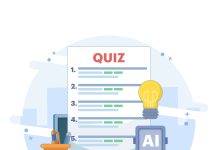EY is committed to developing talented professionals as a key part of its vision to “build a better working world.” Whether they become senior leaders at EY or elsewhere in the business world, EY believes that developing future leaders is imperative to its mission.
To this effort, EY created a multi-year program for a select group of senior partners to ready them for the next level of leadership. Each participant is assigned an executive coach, a partner mentor, and an executive-level sponsor—all of whom support participants through the entire program. The program design was guided by a Steering Committee of 30 senior leaders who identified “building and maintaining exceptional client relationships” as a critical skill for participants to hone.
A Course for Developing Client Relationships
In response, a new course was developed to explore the complexities of interpersonal relationships between EY senior executives and their clients. The course, developed in partnership with JMReid Group and titled “The Edge: The Art and Science of Lasting Client Relationships,” focuses on how to develop a client relationship from “acquaintance” to “trusted advisor.”
Through case studies, challenging exercises, and continuous feedback, participants learn to handle a variety of business discussions with clients in a way that engages, inspires, and creates value.
A Different Learning Approach
Recognizing that this was not typical subject matter, the team chose to apply findings about the basis and mechanics of relationship- building from both neuroscience and the social sciences.
Recent work at EY applying neuroscience findings to leadership had shown promising buy-in from the senior partners. The team integrated that data with relationship-based social science and applied this to senior-level client relationships. Interestingly, the principles and tactics identified apply to any relationship: work or personal. In this case, the application is to the EY-client context— but the benefit for participants is broader than just work contexts.
Our in-depth analysis of the neuroscience and social science data revealed five essential elements to building and improving any relationship:
- An ability to be fully present while relating to another.
- Sensitivity to emotions and the ability to engage emotionally at an appropriate level.
- A willingness to be vulnerable, to let one’s real self be seen.
- An ability to manage one’s own self-defeating thoughts at critical moments.
- Awareness and self-management of assumptive “fast thinking.”
Each of the five topics then was further developed, edited, and arranged as a large-scale infographic by a visual designer. “We used this format of text, pictures, and spatial relationships because it enables a quick understanding of the material,” notes EY Americas Chief Talent Development Officer Alison Hooker.
For the actual course design, a focus group with EY partners in senior leadership roles was held to test the concepts. The goal was to determine if the science was solid, unique, and distinct. The focus group provided early validation of the approach and insights that led to some revisions of the design and materials.
Bringing the Course to Life
For the course, the five content areas were developed into “stations.” Each station consisted of a self-standing set of foamcore panels, like a Japanese room screen, with concept-driven infographics. The stations were designed to work for small-group, self-directed discovery learning activities.
The infographics were arranged on the standing panels under three headings:
- Why would I care?
- What’s this about?
- Tactics
Each station was staffed with a facilitator, and display walls were covered with graphics that described the neuroscience findings that corresponded to the relationship context.
Participants chose from a menu of stations and were issued a ticket. At each station, discovery and experiential learning methods were supported by neuroscience findings. The facilitators described these findings to participants so they understood the reasoning behind these non-traditional materials and methods.
The five stations focused on the following actions:
- Remain fully present through mindfulness. Explore the efficiency and relationship costs of multitasking and lack of focus.
- Be interested in feelings. Understand the biological mechanism of emotion and the evolutionary advantages of feelings.
- Build credibility through humility. Delve into the ways in which openness can be a strength.
- Manage self-defeating thoughts in relationships. Look into the research that proves the mind can rewire the brain.
- Manage the downside of expertise. Study the two systems of thinking, and how one system can manage the speed and assumption risks of the other.
Each station also included a set of succinct tactics provided as a slim pamphlet.
Assessing Effectiveness Overall, the partners have demonstrated their willingness to embrace this innovative approach. Feedback has been positive, with each program being highly rated. Specific comments include:
- “Very insightful topics. Forces us to look deeper into who we are, how we experience and are experienced.”
- “Good data to support—logical and easily can see the ROI.”
- “ Really challenges us on the way we work. It was an excellent session that I can apply to improve my productivity.”
- “Good program for shifting the way we think. Introducing scientific data. I think it helps analytical people ‘get it.’”
EY is testing the effectiveness of The Edge using its Audit Service Quality (ASQ) program and executive coaching sessions. ASQ is an annual client-satisfaction process in which an independent reviewer visits with a client to assess the strength and weaknesses of the relationship. These personal interviews with C-suite executives provide detailed feedback on the partner’s relationship skills. Post-training measures are compared to those gathered prior to participation in the program. EY’s target is a five percent increase in customer satisfaction ratings. These measures will help shape and refine the content for future programs.


